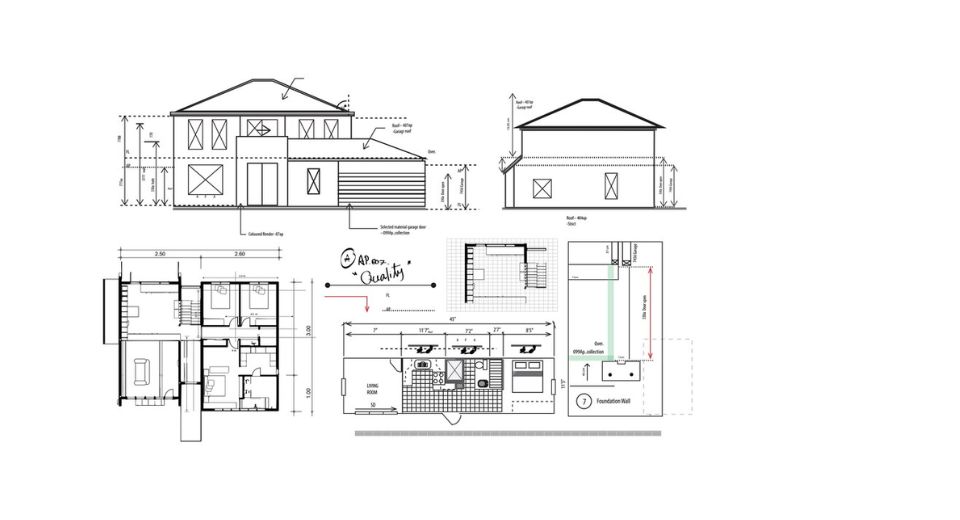
Feb 10, 2025

The Global Floor Plan Tool Market has experienced a sea change fueled by advances in artificial intelligence, automation, and cloud collaboration. What was previously a domain of manual drafting processes and CAD-based software is now shifting toward more agile and accessible AI-based solutions. This transition is not solely about efficiency but also one that encompasses precision, flexibility, and meeting ever-evolving consumer expectations. Intuitive user interfaces paired with smooth integration and interaction with 3D visualization tools across multiple devices can no longer be considered optional; they are now fundamental to contemporary architectural workflows. Investment into these modern tools gives firms the insight to keep a competitive edge, enhancing their operational streamlining and productivity.
We have seen a massive evolution of a new age of architectural and interior design solutions since the development of digital tools, which has drastically changed how professionals perceive and implement spatial designs. The research done by Metastat Insight provides an in-depth perspective of the industry development along with the evolving technological landscape and increasing software-based approaches to concept, draft, and refine floor plans. As companies, real estate developers, architects, and contractors are shifting towards innovative techniques and means of design, the demand for user-friendly and highly productive digital platforms is ever-growing.
Global Floor Plan Tool market is estimated to reach $809.7 million in 2025 with a CAGR of 11.2% from 2025 to 2032.
Software providers in this industry are continuously improving their software, integrating intelligent automation functionalities that reduce human error and enhance speed to project completion. With relevant predictive models, AI, and machine learning provide design recommendations and check compliance with local building codes, creating an added sophistication layer for these platforms. These features have now transcended from just being considered as academic advancements to being practically applicable innovations that change the way professionals approach a design predicament. As digital floor planning solutions transcend beyond veteran architects, small firms, real estate agents, and independent designers also find worth in terms of user-friendliness and functionality.
The rise of cloud platforms, while restricting the conventional process of architecture, opened new avenues for others. Thanks to web apps with minimal requirements for pre-existing knowledge, users create and modify layouts without the need for extensive training. This transition not only widens the consumer base but also enhances inter-team collaboration, allowing several stakeholders to provide input in real time. Such fluidity in design modification will ensure responsiveness toward last-minute changes, becoming increasingly important for real estate and commercial construction industries.
An equally strong pulling force behind the present movement is customization versus access. Businesses and end-users no longer seek generic solutions but rather look at platforms that address their specific needs. A real estate company needing tools for virtual staging or interior design studios needing high-fidelity 3D renderings are applications that make for a rich ecosystem of specialized solutions. This has, in turn, resulted in an onslaught of modular software offers, where prospective third parties can be increased according to user-needs and thus ensuring growth and long-term usability.
The adoption of augmented reality (AR) and virtual reality (VR) in digital floor planning gives another dimension to spatial concept design. Homeowners, investors, and developers can now stroll through virtual spaces even before real construction starts, thus saving costs with fewer revisions and misinterpretations. This intersection of immersive technologies with cloud-based solutions fast-tracks decision-making processes that are better informed and data-driven. This cloud platform not only enhances visualization but also helps mitigate the communication gap separating designers from their clients, reducing discrepancies in the expectations versus final outcomes.
Today’s omnipresent shift toward eco-designed practice has yet heightened the interest directed at digital floor planning solutions. Sustainable presumptions are becoming more and more integrated into different platforms that allow designers to examine energy efficiency, material utilization, and environmental impact, even establishing grid-shape outlines during preliminary design computation. This is a thought-through approach that goes with today’s trend of green architecture, where the optimization of resources with reduced waste constitutes an important consideration. AI-backed sustainability assessments provide professionals with critical input in favor of integrative decision-making straddling both economic and ecological needs.
While many great things are happening in this sector, challenges remain with data security and interoperability. When the security of the floor planning tools became somewhat reliant on cloud infrastructure, protectors against data breaches and holding the intellectual property appeared. A lot of money has already gone from the manufacturers into encryption methods and multilayer authentication protocols so that secure design data is being provided. Interoperability among different software ecosystems, however, is still a developing process, for which common cross-functionality has yet to be established. However, with an advancing interoperability focus, bridging solutions are now getting traction.
Equally worthy to note is the financial return that accrues from these advancements, characterized by increased investment by established software titans and emerging tech startups in the sector. Thus, the infusion of capital sustains the fire of innovation and leads to the birth of sophisticated AI-enabled tools, serving the needs of enterprise-level users as well as small-scale professionals.
Drop us an email at:
Call us on:
+1 214 613 5758
+91 73850 57479